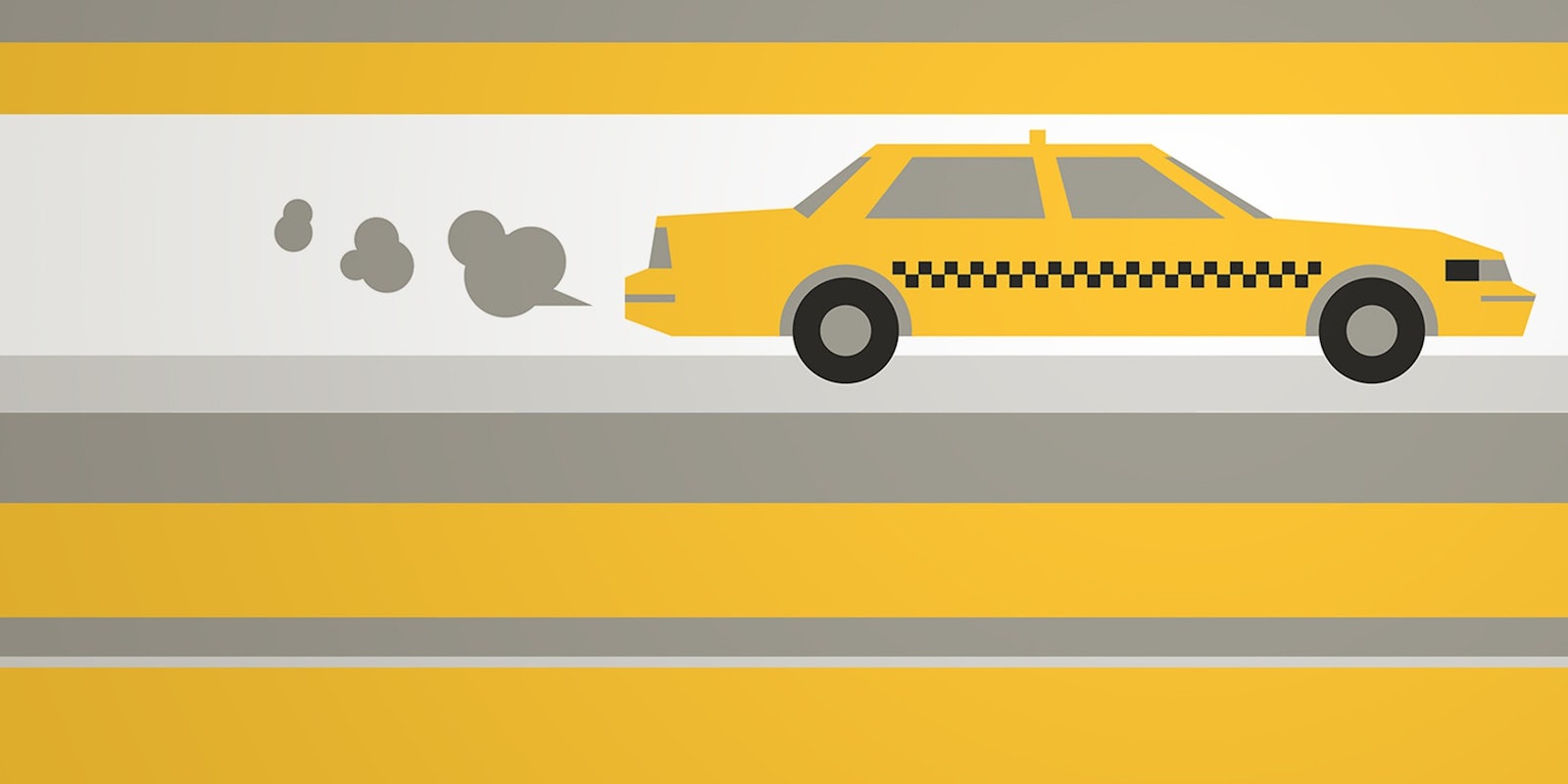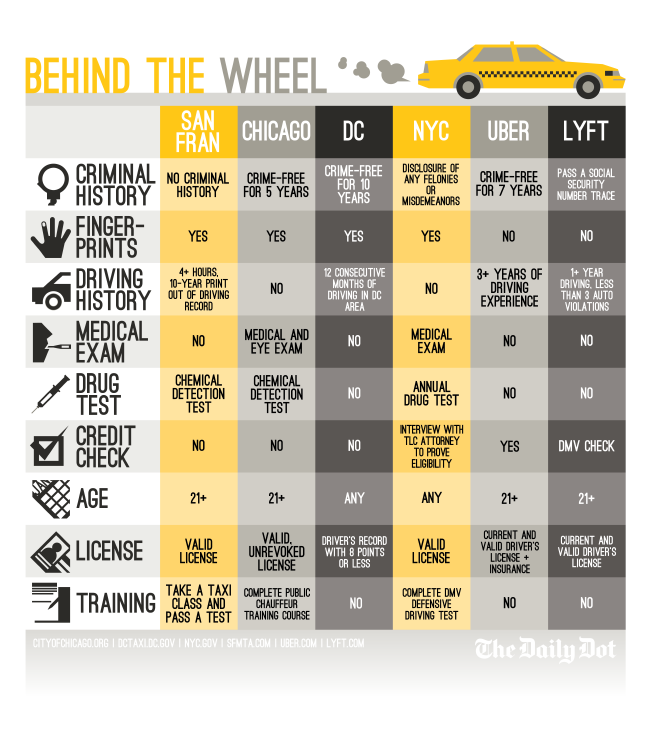This story is part of a series of features, The Future of Ride-Hailing. The project is intended to show how the taxicab industry, with varying degrees of success, is pushing back against the existential threat posed by the rise of ride-hailing services like Lyft and Uber.
To get a license as a taxi driver in Chicago, you have to be current on all child support payments and have paid off all your parkings tickets. D.C. cab drivers must turn in three letters of recommendation and undergo a drug test. San Francisco requires prospective cabbies to pass taxi training school and submit a 10-year print out of their driving record. All three cities also require cab drivers to pass fingerprint background checks.
In Seattle, taxi drivers can only wear shorts on in the summer months and, even then, only bermuda shorts. Seriously.
It’s no secret that becoming a taxi driver in most major cities is a more complicated process than signing up to drive for ride-hailing services like Uber or Lyft. Most major cities require cab drivers to pass fingerprint background checks, which run an applicant’s biometrics against local, state, and federal databases. Uber and Lyft, by contrast, rely on an online-only application process. Applicants are asked to upload copies of their driver’s licenses and motor vehicle records. Uber uses a firm called Checkr to run its background checks;Lyft uses Sterling Backcheck. The entire process can take as little as 48 hours, whereas, for cabs, it always takes significantly longer.
To get a better idea of how the standards stack up for different cities and between Uber, Lyft, and the taxi industry, check out the infographic below.



